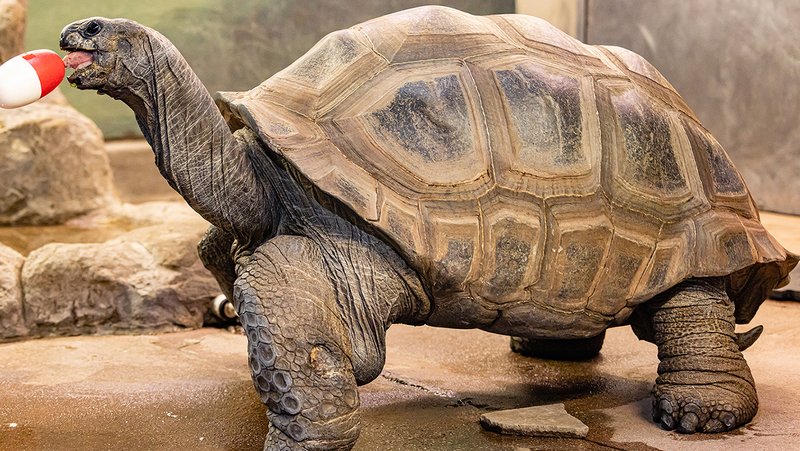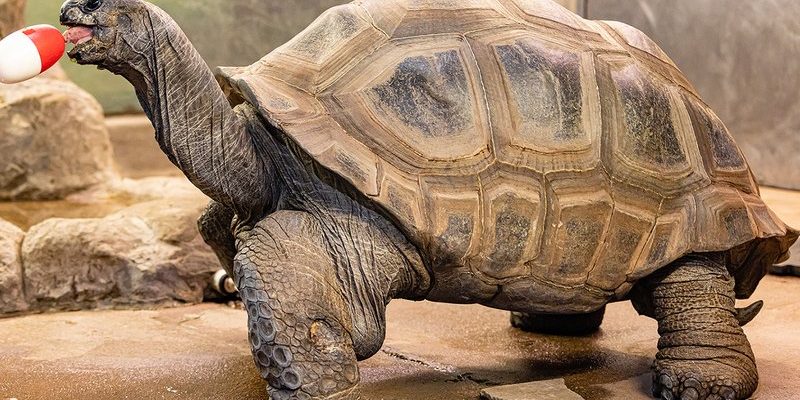
Think of the Aldabra giant tortoise as the maintenance crew of its island paradise. Its unique habits and behaviors impact everything from the vegetation to the soil. Understanding its role can help us appreciate the delicate balance of nature and the importance of conservation efforts. Let’s dive deeper into how these incredible creatures contribute to their ecosystem.
What Makes the Aldabra Giant Tortoise Unique?
The Aldabra giant tortoise (Aldabrachelys gigantea) is one of the largest tortoise species in the world, with some individuals weighing over 500 pounds. They can live for more than a century, making them true elder statesmen of nature. Their massive size isn’t just for show; it plays a significant role in their survival and interactions within their ecosystem.
These tortoises are primarily herbivores, munching on grasses, leaves, and fruits. They’ve developed a digestive system that allows them to process tough plant material efficiently. Their slow metabolism means they don’t need to eat all the time, which is handy in their sometimes sparse environment. This unique diet enables them to influence the plant life around them significantly.
You might be wondering what happens to the vegetation when giant tortoises graze. Well, they don’t just eat; they also help spread the seeds of the plants they consume. This creates a cycle that promotes plant growth and diversity. But there’s much more to their role in the ecosystem than simply being big eaters.
Herbivores and Their Impact on Vegetation
The Aldabra giant tortoise’s role as a herbivore is crucial for maintaining the health of its ecosystem. By feeding on various plants, these tortoises help regulate plant populations. Overgrown areas can lead to decreased biodiversity, so their grazing keeps vegetation in check. It’s a bit like having a natural lawnmower that promotes a balanced environment.
Moreover, their feeding habits encourage the growth of specific plant species. For instance, they prefer certain grasses and shrubs, which can flourish better when other plants are kept at bay. This process fosters a more diverse habitat that supports a variety of wildlife.
Interestingly, the tortoise’s grazing also encourages new growth. As they nibble on leaves, they stimulate the plants to produce more shoots. This process not only helps maintain plant health but also provides food for other herbivores in the area. In this sense, the tortoises act as caretakers of their environment, influencing the entire food web on the island.
Soil Aeration and Nutrient Cycling
Here’s the thing: the Aldabra giant tortoise isn’t just a consumer; it’s also a key player in soil health. As these tortoises wander around, they dig into the ground to find tasty roots or fresh grasses. This behavior naturally aerates the soil, creating spaces for air and water to penetrate deeper. Think of it as nature’s way of “fluffing up” the earth, which is essential for healthy plant growth.
This soil disturbance also promotes nutrient cycling. When tortoises feed on plants, they don’t just benefit themselves—they contribute to the nutrient cycle. Their droppings are rich in nitrogen and other essential nutrients, returning beneficial compounds to the soil. This process enhances soil fertility, supporting a vibrant ecosystem.
The relationship between the tortoises and their environment is a beautiful example of interdependence. They rely on plants for food, while their activities ensure that these plants thrive. By benefiting from the ecosystem, they give back in ways that are crucial for the health of the environment.
Supporting Other Wildlife
The Aldabra giant tortoise doesn’t just impact the plants around it; it also plays a vital role in supporting other wildlife. Many animal species depend on the tortoises for food and habitat. For example, the seeds that these tortoises disperse can lead to new plant growth, which in turn provides shelter and food for various birds, insects, and other creatures.
Some species have even evolved to rely specifically on the tortoises. For instance, certain birds can be seen perched on their shells, taking advantage of the insects that are stirred up when the tortoises move through their environment. In a way, the tortoises are like living condos for various small animals, contributing to biodiversity on the island.
The presence of the Aldabra giant tortoise also signals a healthy ecosystem. Their survival indicates that the balance of plants and animals in the environment is on the right track. When tortoises thrive, it suggests that the entire ecosystem is functioning well, benefiting all who call the Aldabra Atoll home.
Conservation Challenges and Efforts
Unfortunately, the Aldabra giant tortoise faces several threats. Habitat loss, environmental changes, and human activities can impact their populations. Conservation efforts are crucial to ensure that these remarkable creatures continue to thrive in their natural habitat.
Organizations dedicated to wildlife conservation work tirelessly to protect the Aldabra Atoll and its inhabitants. Key initiatives include habitat restoration, breeding programs, and ongoing research to monitor tortoise populations. These efforts help maintain the delicate balance of their ecosystem, ensuring that the tortoises can continue providing their unique benefits to the environment.
You might wonder how you can contribute to these conservation efforts. Supporting wildlife organizations, spreading awareness about the importance of these tortoises, and advocating for sustainable practices can all make a difference. Every small action counts when it comes to protecting our planet.
The Future of the Aldabra Giant Tortoise and Its Ecosystem
As we look to the future, the Aldabra giant tortoise remains an important symbol of ecological health. Their role in the ecosystem is a reminder of how interconnected nature really is. Protecting these magnificent tortoises means preserving the delicate balance of life on the Aldabra Atoll.
By focusing on conservation and education, we can ensure that future generations enjoy the beauty and benefits of the Aldabra giant tortoise. Just like a gardener tends to their plants, we must care for the natural world around us. The more we understand the significance of this creature, the better equipped we’ll be to fight for its survival.
In summary, the Aldabra giant tortoise is more than just an impressive reptile. Its presence has far-reaching effects impacting everything from vegetation to the diverse wildlife around it. By nurturing and protecting this species, we’re taking steps toward safeguarding an entire ecosystem. If we want the Aldabra giant tortoise to continue playing its vital role, we need to commit to conservation efforts that support it and the fragile ecosystem it helps sustain.

